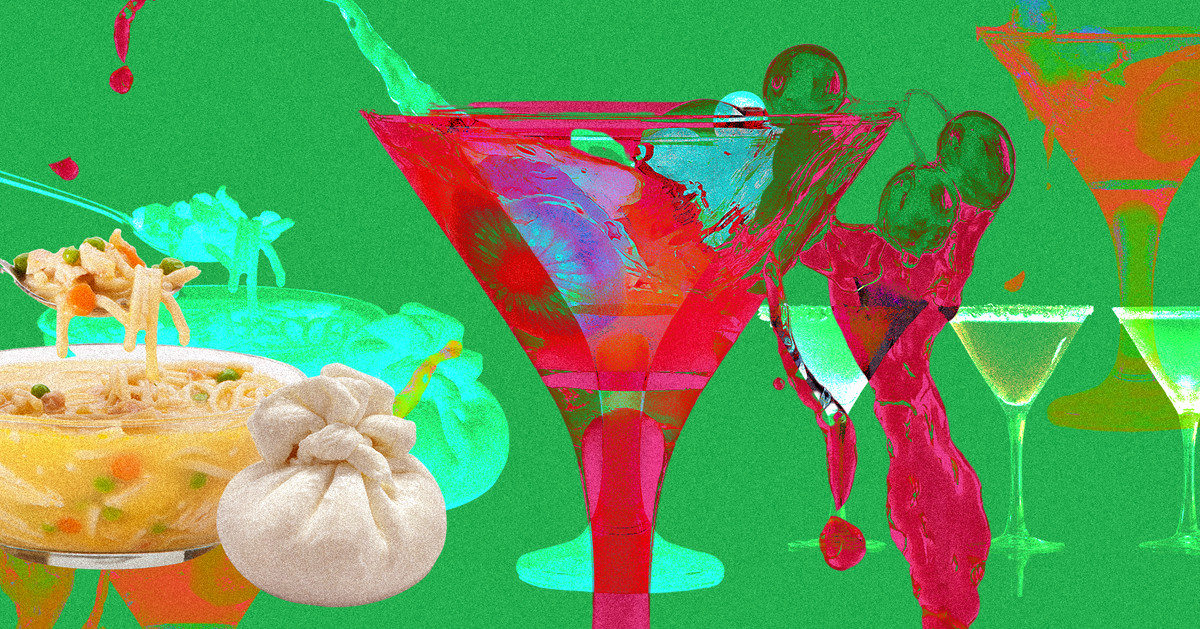
As a growing number of restaurants and diners lean into nostalgic, luxurious experiences, martinis — which the Guardian once called “retro hedonism in a glass” — have also found themselves at the center of a hot cultural moment. Now, it seems our recent martini madness is moving out of the glass and onto the dinner plate.
The first martini-inspired food recipe that caught my attention was Emily Ziemski’s dirty martini salad dressing, published on Food52 in March. It made perfect sense: I like my (gin) martinis crisp, salty, and olivey, which is also how I like my salads. A few weeks later, via a paywalled Substack post, came a martini babka from recipe developer Kate Ray involving twists of orange marmalade and green olive tapenade. More recently, a dirty martini pasta has been popping on my TikTok feed thanks to Emily Eggers, the recipe developer also known as Legally Healthy Blonde.
These martini-inspired recipes aren’t just olive-flavored: Eggers’s pasta involves making a sauce of crushed olives, gin, olive brine, and butter, then topping it all with blue cheese. It looks delicious. Naturally, Eggers’s videos of the pasta have gone viral, and the recipe has gotten traction on food sites.
To me, these martini-inspired foods are certainly preferable to the reverse: Social media has brought us TikTok engagement bait in the form of chicken soup martinis, tzatziki martinis, burrata martinis, and other weirdly dinner-esque drinks. While those ideas stretch the boundaries of “dirty” to questionable degrees, martini as a flavor profile in the opposite direction makes complete — and kind of obvious — sense. It’s just salt, olive, and (if you’re using gin) a hint of botanicals, and that works with lots of dishes.
A recent recipe from Amy Thielen’s forthcoming Company offers more inspiration to cook with gin. Thielen uses the spirit as part of a sage-infused pan sauce for crispy smashed chicken breasts, to seemingly great effect. “This is perfection. Do not change a single thing,” one New York Times Cooking reader commented. Other cooks offer recipes for gin-cured salmon and gin-spiked mussels; add some olives and there’s another martini-inspired dish.
There is so much potential in thinking of the martini as a flavor profile that’s ready to be brought to new formats, but maybe even also in the martini as an ingredient. Recently, I tried the martini from the restaurant Via Carota’s bottled cocktail line. Lazy and with no bar equipment, I was excited to drink it, until I realized it was vodka-based. But with the martini dressing on my mind, I figured out a way to use it: That bottled martini became vodka sauce. It didn’t taste like a martini, but then again, maybe not everything has to.
